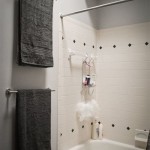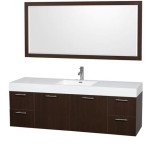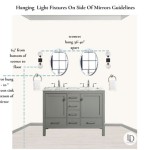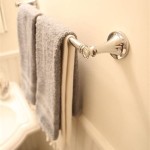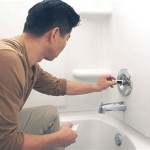Bathroom Sink Cabinet Design: A Comprehensive Guide
The bathroom sink cabinet is a pivotal element in any bathroom design, serving as both a functional storage solution and a visual anchor point. Understanding the nuances of bathroom sink cabinet design is crucial for creating a space that is both aesthetically pleasing and highly practical. This article provides a comprehensive overview of the various aspects of bathroom sink cabinet design, covering styles, materials, configurations, and key considerations for ensuring optimal functionality and visual appeal.
The primary role of a bathroom sink cabinet extends beyond simply housing the sink. It provides concealed or open storage for toiletries, cleaning supplies, and other bathroom essentials, helping to maintain a clutter-free and organized environment. Furthermore, the cabinet contributes significantly to the overall style of the bathroom, complementing the existing decor and setting the tone for the entire space. The selection of a suitable sink cabinet requires careful consideration of various factors, including the size and layout of the bathroom, the desired aesthetic, and the specific storage needs of the occupants.
Understanding the Different Styles of Bathroom Sink Cabinets
Bathroom sink cabinets are available in a wide array of styles, each offering a distinct aesthetic and functional advantage. Choosing the right style depends heavily on the overall design theme of the bathroom and the personal preferences of the homeowner. Some of the most popular styles include:
Vanity Cabinets: These are freestanding units that combine the sink and countertop with storage space underneath. Vanity cabinets are generally the most common type and are available in a vast range of sizes, materials, and designs. They can be further categorized based on their leg style: those with exposed legs, those with a toe kick, and those that appear to float (wall-mounted). Vanity cabinets often provide the most storage space and can accommodate various sink types, including undermount, drop-in, and vessel sinks. They are suitable for both large and small bathrooms, though the dimensions must be chosen carefully to ensure adequate space for movement.
Pedestal Sink Cabinets: These cabinets are designed to be used with pedestal sinks, offering a semi-enclosed storage solution beneath the sink basin. They are typically smaller than vanity cabinets and offer limited storage space, making them suitable for smaller bathrooms where space is at a premium. Pedestal sink cabinets often feature a single door or a small set of drawers, providing just enough room for essential toiletries. The aesthetic often skews towards traditional or minimalist styles.
Wall-Mounted Cabinets: Also known as floating vanities, wall-mounted cabinets are attached directly to the wall, creating a modern and airy look. This design offers the advantage of easy cleaning underneath the cabinet and can make a small bathroom feel larger. Wall-mounted cabinets are available in various sizes and styles, but their storage capacity is often slightly less than that of traditional vanity cabinets. The strength of the wall and the anchoring system are critical considerations when installing a wall-mounted cabinet.
Corner Cabinets: These cabinets are specifically designed to fit into the corner of a bathroom, maximizing space utilization in tight spaces. Corner cabinets often feature a triangular shape and can be used with various sink types. They are an excellent option for bathrooms with unconventional layouts or limited floor space. However, the storage capacity of corner cabinets may be limited compared to other types.
Console Sinks with Cabinets: Console sinks typically consist of a sink basin supported by legs or a metal frame. Some console sinks are integrated with a small cabinet or shelf underneath, providing a minimal amount of storage space. This design is often favored for its elegant and vintage-inspired aesthetic. The storage capacity is generally less than that of a full vanity cabinet, making it suitable for bathrooms where style is prioritized over extensive storage.
Material Selection and Durability
The materials used in the construction of a bathroom sink cabinet significantly impact its durability, aesthetic, and overall cost. Given the humid environment of a bathroom, selecting moisture-resistant materials is paramount to prevent warping, swelling, and other forms of damage. Common materials used for bathroom sink cabinets include:
Solid Wood: Solid wood cabinets offer a classic and luxurious look and are known for their durability and timeless appeal. However, solid wood is susceptible to moisture damage and requires proper sealing and maintenance to prevent warping and cracking. Hardwoods like oak, maple, and cherry are popular choices for their strength and resistance to dents and scratches. Solid wood cabinets are typically more expensive than cabinets made from other materials.
Plywood: Plywood is an engineered wood product made from layers of wood veneer glued together. It is more resistant to moisture than solid wood and is less prone to warping or cracking. Plywood is often used for the cabinet box and interior components, providing a stable and durable structure. High-quality plywood with a moisture-resistant finish is essential for bathroom applications.
Medium-Density Fiberboard (MDF): MDF is another engineered wood product made from wood fibers and resin. It is a smooth and uniform material that is easy to paint or laminate. MDF is less expensive than solid wood or plywood but is also more susceptible to moisture damage. MDF cabinets should be sealed properly and protected from direct contact with water.
Particleboard: Particleboard is the least expensive engineered wood product and is made from wood chips and resin. It is not as strong or durable as plywood or MDF and is highly susceptible to moisture damage. Particleboard is typically used for less visible components of the cabinet or for very budget-conscious projects. It is generally not recommended for high-moisture environments like bathrooms.
Laminates and Veneers: Laminates and veneers are thin layers of material applied to a substrate, such as plywood or MDF. Laminates are made from synthetic materials, while veneers are made from thin slices of wood. These materials offer a wide range of finishes and colors and can mimic the look of solid wood at a lower cost. Laminates and veneers are relatively durable and easy to clean, making them a practical choice for bathroom cabinets.
Metal: Metal cabinets offer a modern and industrial look and are known for their durability and resistance to moisture. Stainless steel and powder-coated steel are common choices for bathroom cabinets. Metal cabinets are typically more expensive than wood cabinets and may require special cleaning products to maintain their appearance.
Optimizing Functionality and Storage
The internal organization and storage capacity of a bathroom sink cabinet are crucial factors to consider. A well-designed cabinet should provide ample space for storing toiletries, cleaning supplies, and other bathroom essentials in an organized and accessible manner. Several features and accessories can enhance the functionality of a bathroom sink cabinet:
Drawers: Drawers are an essential component of many bathroom sink cabinets, providing convenient storage for smaller items such as makeup, toiletries, and towels. Drawers can be customized with dividers and organizers to further improve organization. Soft-close drawer slides are a desirable feature, preventing slamming and extending the lifespan of the cabinet.
Shelves: Adjustable shelves allow for flexible storage of items of varying sizes. Shelves can be placed behind doors or left open for easy access. The depth and height of the shelves should be carefully considered to accommodate the specific items being stored.
Pull-Out Organizers: Pull-out organizers, such as vanity organizers or towel racks, maximize storage space and improve accessibility. These organizers can be easily pulled out to reveal the contents, making it easier to find and retrieve items.
Tilt-Out Trays: Tilt-out trays are often located in front of the sink and are designed to store smaller items such as toothbrushes, toothpaste, and razors. These trays keep frequently used items within easy reach and help to prevent clutter on the countertop.
Electrical Outlets and USB Ports: Integrating electrical outlets and USB ports into the bathroom sink cabinet can provide a convenient charging station for electronic devices, such as smartphones, electric toothbrushes, and hair styling tools. This feature helps to keep cords hidden and prevents clutter on the countertop.
In addition to these specific features, the overall layout and configuration of the cabinet should be carefully considered to maximize storage efficiency. The placement of drawers, shelves, and organizers should be tailored to the specific needs of the occupants and the types of items being stored. A well-organized bathroom sink cabinet can significantly improve the functionality and convenience of the bathroom.

27 Floating Sink Cabinets And Bathroom Vanity Ideas Modern Small Sinks

10 Stunning Bathroom Cabinet Designs For A Small Space

Modern Bathroom Vanity Design Regalo Kitchens

8 Beautiful Double Bathroom Vanity Ideas Oppein

15 Small Bathroom Vanity Ideas That Rock Style And Storage
:max_bytes(150000):strip_icc()/258105_9352cff4942f41ca9a569fd19719f30cmv2-1dbb8e2d34e447f1a8ec34f831615b76-37ea3a19ffd34f79b043ef86535a3778.jpeg?strip=all)
26 Bathroom Vanity Ideas That Are Stylish And Functional

A Step By Guide To Designing Your Bathroom Vanity

6 Modern Bathroom Vanity Design Ideas Lily Ann Cabinets

Wooden Bathroom Vanity Cabinets Size 24 18

36 Contemporary Bathroom Vanity With Top Sink 2 Soft Close Doors And 6 Drawers Modernluxe Target
Related Posts

